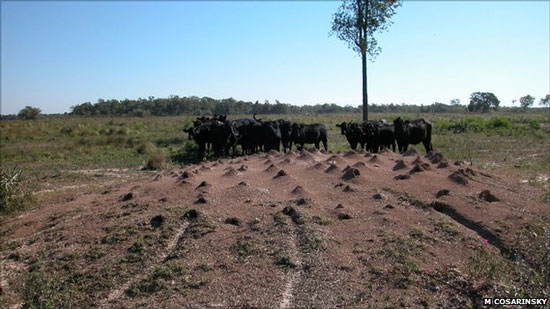Air conditioning system in ant nest
Ants are famous for their diligence and diligence, but their construction skills still surprise scientists.
>>>Video: Structure of ants
Scientists at the National Museum of Natural Science (Argentina) excavated an ant nest to find out how they could keep the temperature stable and enough air, allowing young animals to have can grow.

As a result, the excavation team found that ants build their nests with a system of small towers inside . These small towers were built with porous walls and connected to the ventilation system, allowing the air to circulate like a tiny underground city.
Scientists then introduced a grass ant colony into the laboratory to study and test the nesting skills with a variety of materials, including clay, coarse sand and fine sand. During the experiment, the researchers also changed the amount of material and sprayed water on the material to simulate the rain as in nature.
Dr. Marcela Cosarinksy, head of research, said on the Daily Mail : 'When ants complete a tower in their nest, we conduct analysis of how to arrange their materials through a microscope, and found that ants build towers by, arranging sand grains in combination with small clay blocks to form a porous material. '
When the water collapses the walls of the tower built with clay and sand, but the worker ant immediately removes the rubble to build a new wall to ensure stable temperature conditions for juveniles.
- The first stadium in the world equipped with air conditioning
- Bees alternate air conditioning in the nest
- How to use bird's nest is healthy
- How to fix when the air conditioner is flashing
- Cheap air-conditioned roofs
- Air nest dryer helps farmers save hundreds of millions of dong / year
- How to recognize real bird's nest water
- The nest nest knows how to plant fruit trees to make a nest
- German scientist found a way to turn air conditioning into a CO2 vacuum, preventing the Earth from heating up
- Who invented air conditioning?
- Detecting super bird's nest
- Auction of dinosaur nest
 Why do potatoes have eyes?
Why do potatoes have eyes? 'Tragedy' the world's largest carnivorous life: Death becomes ... public toilet
'Tragedy' the world's largest carnivorous life: Death becomes ... public toilet Tomatoes were once considered 'poisonous' for 200 years
Tomatoes were once considered 'poisonous' for 200 years Detecting microscopic parasites on human face
Detecting microscopic parasites on human face